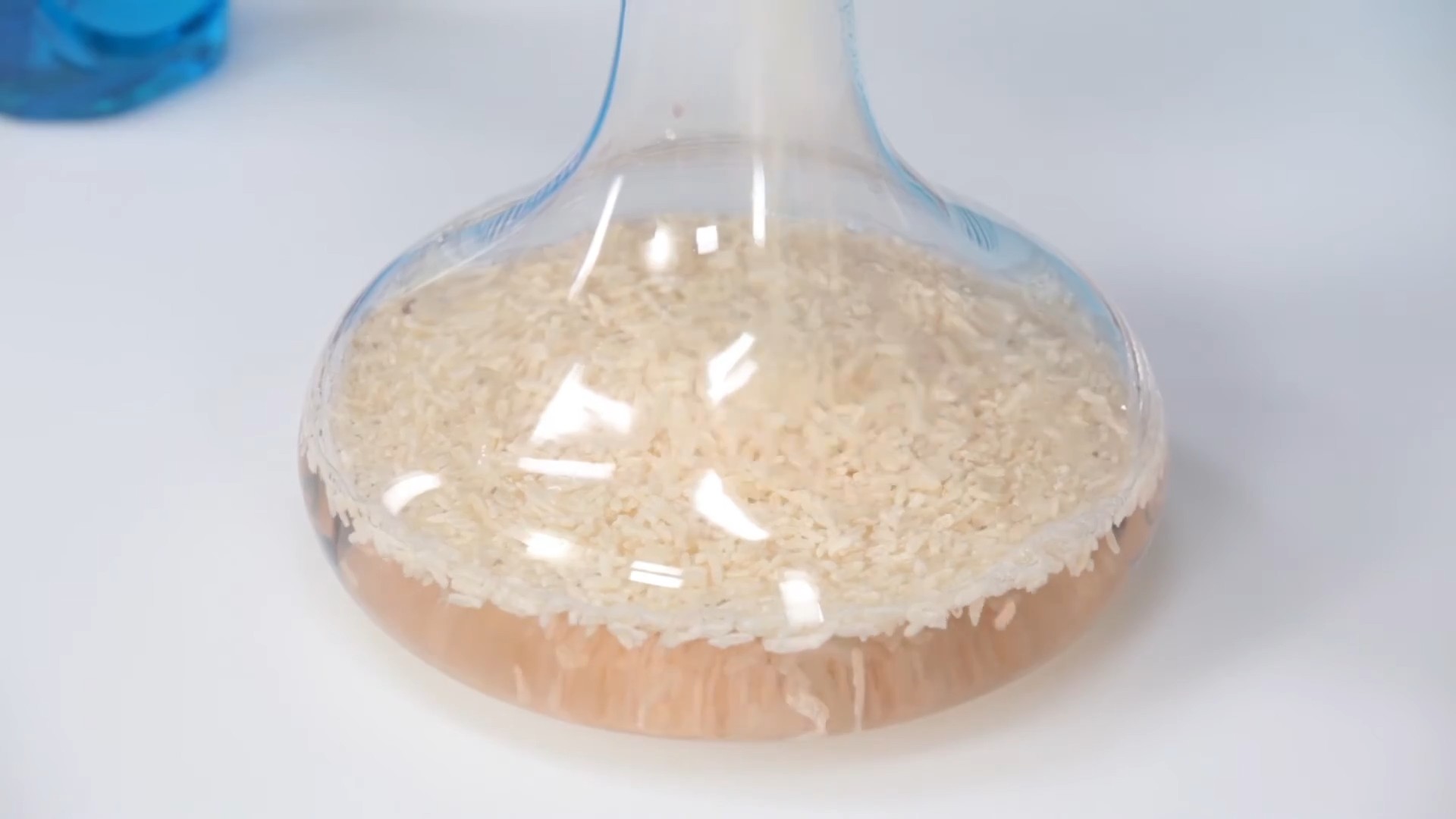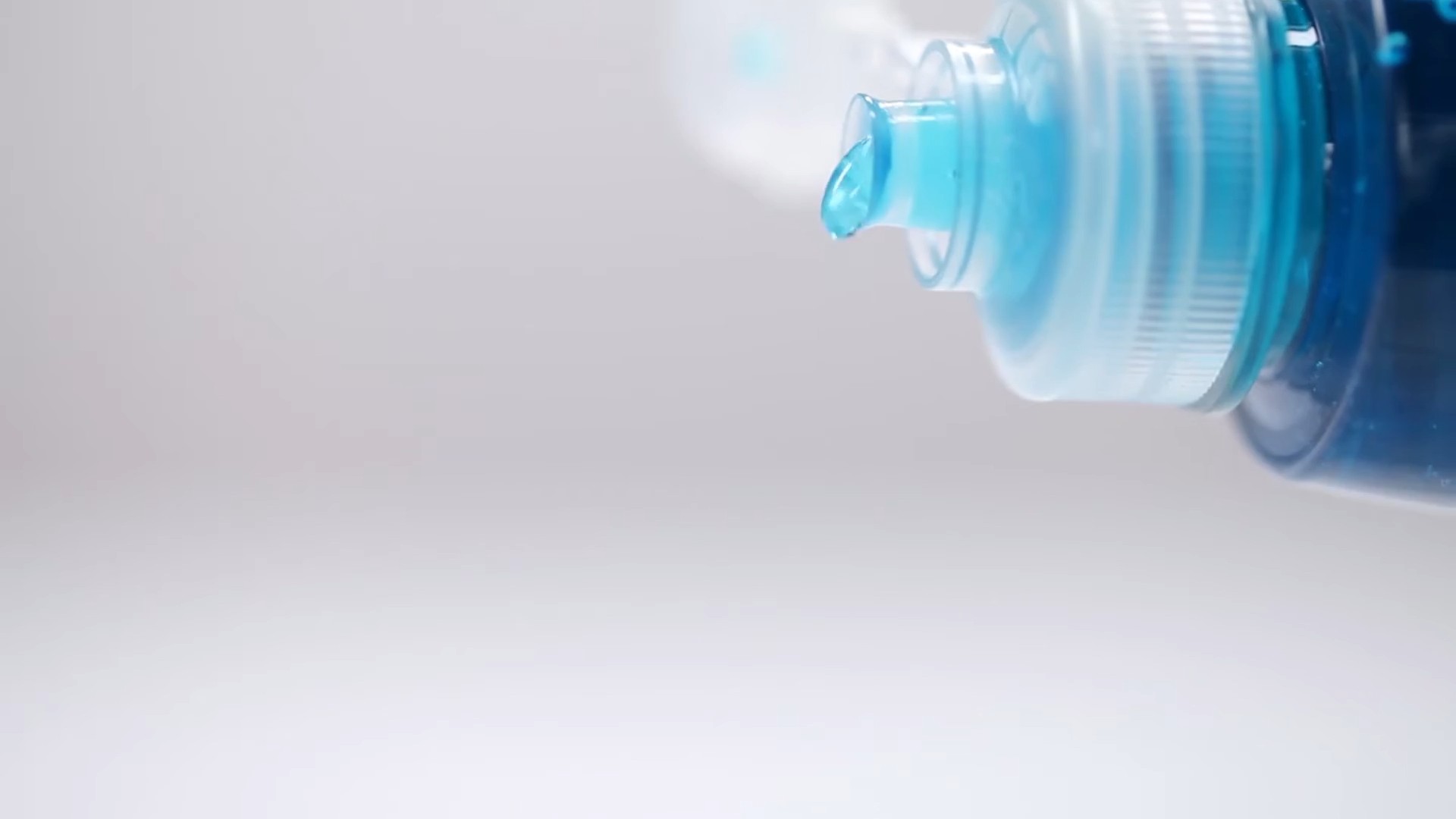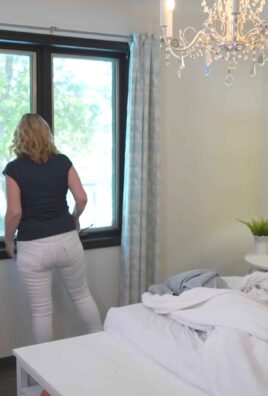Cleaning cloudy vases can feel like an impossible task, right? You’ve got this beautiful vase, maybe a family heirloom or a stunning piece you picked up on your travels, but it’s lost its sparkle. That cloudy film inside just won’t budge, no matter how hard you scrub. I totally get the frustration! It’s like the vase is hiding its true beauty, and you’re determined to unlock it.
Vases have been cherished for centuries, dating back to ancient civilizations like the Greeks and Romans, who used them not only for practical purposes but also as artistic expressions. They held precious oils, wines, and even served as burial urns. Today, while we might not be using them for quite the same purposes, vases still hold a special place in our homes, showcasing our favorite blooms and adding a touch of elegance to our living spaces. But a cloudy vase? It just doesn’t do justice to those beautiful flowers!
That’s why I’m so excited to share these simple, effective DIY tricks for cleaning cloudy vases. You don’t need harsh chemicals or fancy equipment. These are easy, budget-friendly solutions using things you probably already have in your pantry. Imagine the satisfaction of restoring your vase to its former glory, letting the light shine through and truly showcasing your floral arrangements. Let’s dive in and get those vases sparkling again!

Revive Your Vases: A DIY Guide to Sparkling Clarity
Okay, so you’ve got those beautiful vases, right? The ones that used to gleam and show off your flowers perfectly? But now they’re looking a little…cloudy. Don’t worry, it happens to the best of us! Hard water, mineral deposits, and just general grime can build up over time, leaving your vases looking dull and lifeless. But before you think about tossing them, let me tell you, there’s a super easy and effective way to bring back their sparkle. I’m going to walk you through a few different methods I’ve personally tried and tested, so you can choose the one that works best for you and the supplies you have on hand. Let’s get those vases looking brand new again!
Choosing Your Weapon: Methods for Cleaning Cloudy Vases
Before we dive into the nitty-gritty, let’s quickly go over the different methods we’ll be exploring. This way, you can decide which one seems like the best fit for your situation.
* The Vinegar Powerhouse: This is my go-to method for general cloudiness. Vinegar is a natural acid that’s fantastic at dissolving mineral deposits. It’s also readily available and super affordable.
* The Baking Soda Boost: Baking soda is a mild abrasive that can help scrub away stubborn stains and grime. It’s also great for neutralizing odors.
* The Rice Remedy: This is a clever trick for vases with narrow necks that are hard to reach. The rice acts as a gentle scrubbing agent.
* The Denture Tablet Delight: Yes, you read that right! Denture tablets contain enzymes that can break down organic matter and leave your vases sparkling.
* The Salt Scrub Solution: Similar to rice, salt acts as a gentle abrasive, perfect for loosening stubborn deposits.
Method 1: The Vinegar Powerhouse
This is my absolute favorite method because it’s so simple and effective. Vinegar is a cleaning superhero!
What You’ll Need:
* White vinegar
* Water
* Dish soap (optional, for extra cleaning power)
* A soft sponge or cloth
* A bottle brush (for vases with narrow necks)
Step-by-Step Instructions:
1. Rinse the Vase: Start by rinsing the vase with warm water to remove any loose debris.
2. Prepare the Vinegar Solution: In a separate container, mix equal parts white vinegar and warm water. For heavily clouded vases, you can use straight vinegar. I usually start with a 50/50 mix and adjust as needed.
3. Soak the Vase: Pour the vinegar solution into the vase, making sure it covers all the cloudy areas. If the cloudiness is only on the bottom, you can just fill the vase enough to cover that area.
4. Let it Soak: This is the key! Let the vase soak for at least a few hours, or even overnight for really stubborn cloudiness. The vinegar needs time to work its magic and dissolve the mineral deposits. I usually leave mine overnight for the best results.
5. Scrub (if needed): After soaking, use a soft sponge or cloth to scrub the inside of the vase. For vases with narrow necks, a bottle brush is your best friend. You might be surprised at how easily the cloudiness comes off after soaking.
6. Rinse Thoroughly: Rinse the vase thoroughly with warm water until all traces of vinegar are gone. You don’t want your flowers smelling like vinegar!
7. Dry Completely: Dry the vase completely with a clean towel or let it air dry. And voila! Your vase should be sparkling clean and ready to showcase your beautiful blooms.
Method 2: The Baking Soda Boost
Baking soda is another fantastic natural cleaner that can help tackle stubborn stains and grime.
What You’ll Need:
* Baking soda
* Water
* A soft sponge or cloth
* A bottle brush (for vases with narrow necks)
Step-by-Step Instructions:
1. Create a Baking Soda Paste: In a small bowl, mix baking soda with just enough water to form a thick paste.
2. Apply the Paste: Apply the baking soda paste to the cloudy areas of the vase.
3. Scrub Gently: Use a soft sponge or cloth to gently scrub the paste onto the affected areas. The baking soda acts as a mild abrasive to help loosen the grime. For narrow-necked vases, you can try using a bottle brush with the paste.
4. Let it Sit: Let the paste sit for about 15-20 minutes to allow it to work its magic.
5. Rinse Thoroughly: Rinse the vase thoroughly with warm water until all traces of baking soda are gone.
6. Dry Completely: Dry the vase completely with a clean towel or let it air dry.
Method 3: The Rice Remedy
This method is perfect for those vases with narrow necks that are difficult to reach with a sponge or brush.
What You’ll Need:
* Uncooked rice (long grain or short grain, it doesn’t really matter)
* Water
* Dish soap (optional)
Step-by-Step Instructions:
1. Rinse the Vase: Rinse the vase with warm water to remove any loose debris.
2. Add Rice and Water: Pour about 1/4 cup of uncooked rice into the vase. Then, add warm water until the vase is about halfway full. You can also add a squirt of dish soap for extra cleaning power.
3. Swirl and Shake: Cover the opening of the vase with your hand and gently swirl and shake the vase for a few minutes. The rice will act as a gentle abrasive, scrubbing the inside of the vase as it moves around.
4. Empty and Rinse: Empty the rice and water from the vase. Rinse the vase thoroughly with warm water until all traces of rice and soap (if used) are gone.
5. Repeat if Necessary: If the vase is still cloudy, repeat the process with fresh rice and water.
6. Dry Completely: Dry the vase completely with a clean towel or let it air dry.
Method 4: The Denture Tablet Delight
This might sound a little strange, but denture tablets are surprisingly effective at cleaning vases! They contain enzymes that break down organic matter, leaving your vases sparkling.
What You’ll Need:
* Denture cleaning tablets
* Water
Step-by-Step Instructions:
1. Fill the Vase: Fill the vase with warm water.
2. Add Denture Tablets: Drop one or two denture cleaning tablets into the water. The number of tablets you use will depend on the size of your vase and the severity of the cloudiness.
3. Let it Fizz: Let the tablets fizz and dissolve completely. This usually takes about 15-30 minutes.
4. Soak (if needed): For heavily clouded vases, you can let the solution soak for a few hours or even overnight.
5. Rinse Thoroughly: Rinse the vase thoroughly with warm water until all traces of the denture tablet solution are gone.
6. Dry Completely: Dry the vase completely with a clean towel or let it air dry.
Method 5: The Salt Scrub Solution
Similar to the rice method, salt acts as a gentle abrasive to loosen stubborn deposits. I find this works particularly well for hard water stains.
What You’ll Need:
* Coarse salt (like sea salt or kosher salt)
* Water
* Dish soap (optional)
Step-by-Step Instructions:
1. Rinse the Vase: Rinse the vase with warm water to remove any loose debris.
2. Add Salt and Water: Pour about 1/4 cup of coarse salt into the vase. Then, add warm water until the vase is about halfway full. You can also add a squirt of dish soap for extra cleaning power.
3. Swirl and Shake: Cover the opening of the vase with your hand and gently swirl and shake the vase for a few minutes. The salt will act as a gentle abrasive, scrubbing the inside of the vase as it moves around.
4. Empty and Rinse: Empty the salt and water from the vase. Rinse the vase thoroughly with warm water until all traces of salt and soap (if used) are gone.
5. Repeat if Necessary: If the vase is still cloudy, repeat the process with fresh salt and water.
6. Dry Completely: Dry the vase completely with a clean towel or let it air dry.
Important Tips and Tricks for Vase Cleaning Success
* Prevention is Key: To prevent cloudiness from building up in the first place, rinse your vases thoroughly with clean water after each use.
* Hard Water Woes: If you have hard water, consider

Conclusion
So, there you have it! No more hiding those beautiful vases in the back of the cupboard because they’re clouded with stubborn mineral deposits. This simple, effective, and surprisingly affordable DIY trick for cleaning cloudy vases is a game-changer for anyone who loves displaying flowers or simply appreciates the beauty of glassware. It’s a far cry from harsh chemicals and endless scrubbing, offering a gentle yet powerful solution that restores your vases to their former glory.
Why is this a must-try? Because it works! It’s a cost-effective alternative to replacing your vases, saving you money and reducing waste. Plus, it’s incredibly satisfying to witness the transformation from cloudy and dull to sparkling and clear. Imagine the joy of showcasing your favorite blooms in a vase that truly complements their beauty, all thanks to a few simple ingredients you likely already have in your pantry.
But don’t stop there! Feel free to experiment with variations to suit your specific needs. For particularly stubborn cloudiness, try letting the solution sit for an extended period, even overnight. You can also add a tablespoon of baking soda to the mixture for extra cleaning power. If you’re dealing with a vase with a narrow neck, consider using a bottle brush or even a magnetic cleaner designed for aquariums to reach those hard-to-clean areas. For delicate or antique vases, test the solution on a small, inconspicuous area first to ensure it doesn’t damage the finish. You can also try using distilled water instead of tap water to prevent future mineral buildup.
We’re confident that this DIY trick will become your go-to solution for keeping your vases looking their best. It’s a simple, effective, and rewarding way to maintain the beauty of your glassware and enhance your home décor.
Now, it’s your turn! We encourage you to give this DIY trick a try and see the amazing results for yourself. Don’t be afraid to experiment with the variations and find what works best for your specific vases and water conditions. And most importantly, share your experience with us! We’d love to hear your tips, tricks, and success stories in the comments below. Let’s build a community of vase-cleaning enthusiasts and help each other keep our glassware sparkling! Share before and after photos, tell us about any modifications you made, and let us know how this DIY trick has transformed your vases. Your feedback will not only inspire others but also help us refine and improve this method for everyone. So go ahead, unleash the sparkle, and let your vases shine!
Frequently Asked Questions (FAQ)
What causes cloudiness in vases?
Cloudiness in vases is primarily caused by mineral deposits from hard water. When water evaporates, it leaves behind minerals like calcium and magnesium, which accumulate over time and create a cloudy film on the glass surface. Soap residue and hard water stains can also contribute to the problem.
What ingredients do I need for this DIY cleaning trick?
The basic ingredients you’ll need are white vinegar, water, and optionally, baking soda. The ratio of vinegar to water can vary depending on the severity of the cloudiness, but a good starting point is a 1:1 ratio. Baking soda can be added for extra cleaning power, especially for stubborn stains. You might also want to have a bottle brush or a magnetic cleaner on hand for vases with narrow necks.
Is this DIY cleaning trick safe for all types of vases?
While this method is generally safe for most glass vases, it’s always a good idea to test it on a small, inconspicuous area first, especially for delicate or antique vases. Avoid using abrasive scrubbers or harsh chemicals, as these can scratch or damage the glass. If you’re unsure about the material of your vase, consult a professional cleaner or antique dealer before proceeding.
How long should I let the solution sit in the vase?
The soaking time depends on the severity of the cloudiness. For lightly clouded vases, 30 minutes to an hour may be sufficient. For more stubborn stains, you can let the solution sit for several hours or even overnight. Check the vase periodically to see if the cloudiness is dissolving.
What if the cloudiness doesn’t completely disappear after soaking?
If the cloudiness persists after soaking, try scrubbing the inside of the vase with a bottle brush or a non-abrasive sponge. You can also add a tablespoon of baking soda to the solution and let it sit for another hour before scrubbing. For extremely stubborn stains, you may need to repeat the process several times.
Can I use this method to clean other glassware besides vases?
Yes, this DIY cleaning trick can be used to clean other glassware affected by mineral deposits, such as glass bottles, carafes, and even shower doors. Just adjust the amount of solution accordingly and follow the same steps.
How can I prevent cloudiness from returning to my vases?
To prevent cloudiness from returning, use distilled water instead of tap water when filling your vases. Distilled water is free of minerals, so it won’t leave behind deposits. You can also rinse your vases with distilled water after each use and dry them thoroughly. Avoid using harsh soaps or detergents, as these can leave behind residue that contributes to cloudiness.
What if I don’t have white vinegar? Can I use something else?
While white vinegar is the most effective and readily available option, you can try using lemon juice as a substitute. Lemon juice contains citric acid, which can also help dissolve mineral deposits. However, it may not be as effective as white vinegar for stubborn stains.
Is it safe to use this cleaning solution on colored glass vases?
Yes, this cleaning solution is generally safe to use on colored glass vases. However, it’s always a good idea to test it on a small, inconspicuous area first to ensure that it doesn’t fade or damage the color. Avoid using abrasive scrubbers, as these can scratch the surface of the glass and dull the color.
What should I do if the vase has a very narrow neck and I can’t reach the bottom to scrub?
For vases with very narrow necks, you can use a magnetic cleaner designed for aquariums. These cleaners consist of two parts: one that goes inside the vase and one that goes outside. The magnets attract each other, allowing you to scrub the inside of the vase without having to reach in. You can also try using a long, flexible bottle brush or even filling the vase with rice and swirling it around to dislodge the mineral deposits.





Leave a Comment